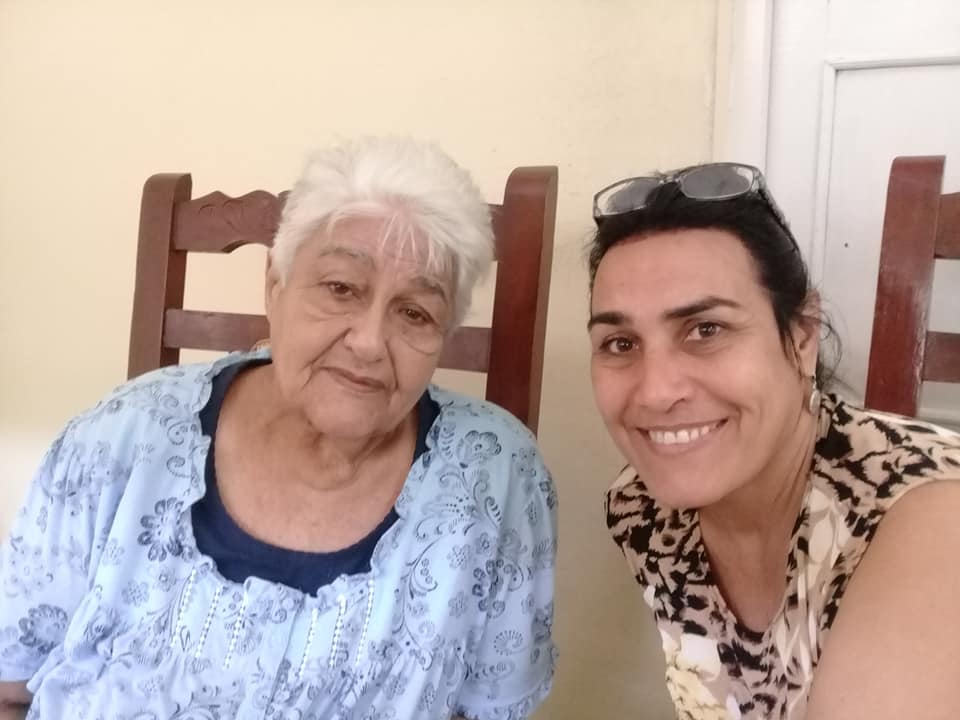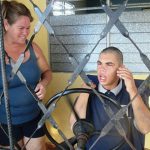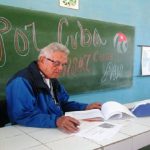I doubt there will be such pure joy on the Educator’s Day, like that one which rejoices Jaruco’s teacher, Edelmira González Brito.
And it was precisely on December 22, 51 years ago, when she received, she assures, the best gift of her life: Miriam.
There is a special bond between mother and daughter, something superior to their own blood ties and that is related to the fact that Edelmira was Miriam’s teacher from first to fourth grade: she taught her to read and write, to discover the world, to understand things, to be stubborn, to fight for her dreams.
And the fact is that nothing fell from the sky for Edelmira, nor the title of the Industrial Technical School for Women, Rosalía Abreu Foundation and even less, that of the teacher.
Edelmira, the teacher
The 83-year-old woman remembers that as soon as the Literacy Campaign finished, an announcement to embrace the teaching profession spread in the streets, mountains and towns until one day it erupted from the speakers of the textile workshop where she had just begun to work. The popular teachers movement was emerging.
Perhaps, because they offered her the opportunity to please her father or because she was made for instruction, which is essentially the same as serving, she decided to go to the classroom, and what a classroom!
She says that that first school named Soledad Portilla was in the mountains at a point in what is now known as the Tumba Cuatro Popular Council, and that it was one of the first three thousand rural classrooms built on the Island in 1959.
It was tens of kilometers from her home in San Antonio de Río Blanco, and in order to get there well and on time, she bought a steering wheel and a horse.
Taking on the multigrade programs and their disciples, so diverse in ages and spirits, was her litmus test in a delirious time of Cuban education.
Working for ten months and studying for two, that woman became a teacher who, by that time, already had her first child.
Miriam
Miriam arrived later, resurrecting colors and joys, as fairies usually do. And among so many dates on the calendar, she chose December 22, the same day her mother celebrated the good fortune of having become a teacher. It was the year 1969.
She was her student, she remembers, and she had to treat her like the rest of her classmates, respect her, stick to her rules and comply with her dictates.
But with a very humble mother-teacher who besides that, set the bar ever higher, her brilliant intelligence did little to obtain additional privileges or rewards.
She understood the challenges of Edelmira, when she started junior high school at the Lenin Vocational in Havana and saw so much talent gathered there.
Her dream was to finish high school, study English and become a translator.
“You should apply for something that allows you to help other peoples” a psychologist suggested her, as if unraveling the dormant nobility in her teenage soul.
The opportunity to fulfill that sort of commandment was given to her by the Detachment of Medical Sciences, a project that knocked on her door in her second year of high school.
At that crossroads the final decision shone: she would be a doctor.
The Havana School of Medicine opened its doors and arms to her in the hardest years of the special period, a time of blizzard that allowed her to turn crumbs into loaves and fish together with the best comrades in the world.
Meanwhile, her father worked hard in countless masonry jobs and her mother, who had finished a Bachelor of Education, although with the first ailments in her health, was still in the classroom.
And finally the year 1993 arrived in full dress to draw her graduation, the title, a career that never ends and the moment to give back the many teachings stamped in her sky to the book of the Cuban Medicine.
The circle
From that momento on, Edelmira has been her most devoted and constant patient ever since. Some time ago she broke an ankle and has trouble walking. The elderly woman says that she suffers, because she is dependent on others, especially her daughter, the Internal Medicine Specialist, Miriam Brito.
“I tell her, it doesn?t mean any trouble for me?, Miriam, who is also the caretaker of the people of her town, insists. She enjoys it, and there is no need to convince anyone of it.
I watch them. They have identical hands: the same line of seduction, equal tenderness and strength.
It is there, in the home that Edelmira and Miriam have shared their whole lives, where I discover why the doctor is so beautiful inside and out, why she wears the white coat as welded to her skin and why the old men of Jaruco, line up just to kiss her, touch her arms, and greet her.
The reasons could be infinite, but the most important prevails, her mother, what she learned from her and that today allows her to help her, alleviate her pain, drive away her fears.
Apparently, those mysterious formulas that define life were combined at the exact moment so that Edelmira and Miriam found, had, complemented and loved each other forever.
Caption: Jaruco’s teacher Edelmira González Brito and her daughter Miriam. Photo: Courtesy of the author.





